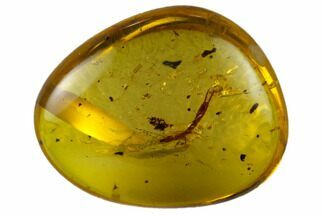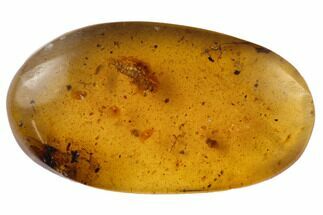BURMESE AMBER WITH INSECTS FOR SALE
Also called Burmite, Burma amber, and Myanmar amber, Burmese amber comes from the northern region of Myanmar (formerly known as Burma) and neighboring countries. First formed about 99 million years ago, this widely varied, yellow to almost red amber has been prized since the Han dynasty of China 2200 years ago. Because it forms differently than Baltic amber, Burma amber is harder: This leads to natural cracks within it. As with other ambers, Burma amber often contains remarkable plant and animal inclusions.
 Reviews
Reviews






